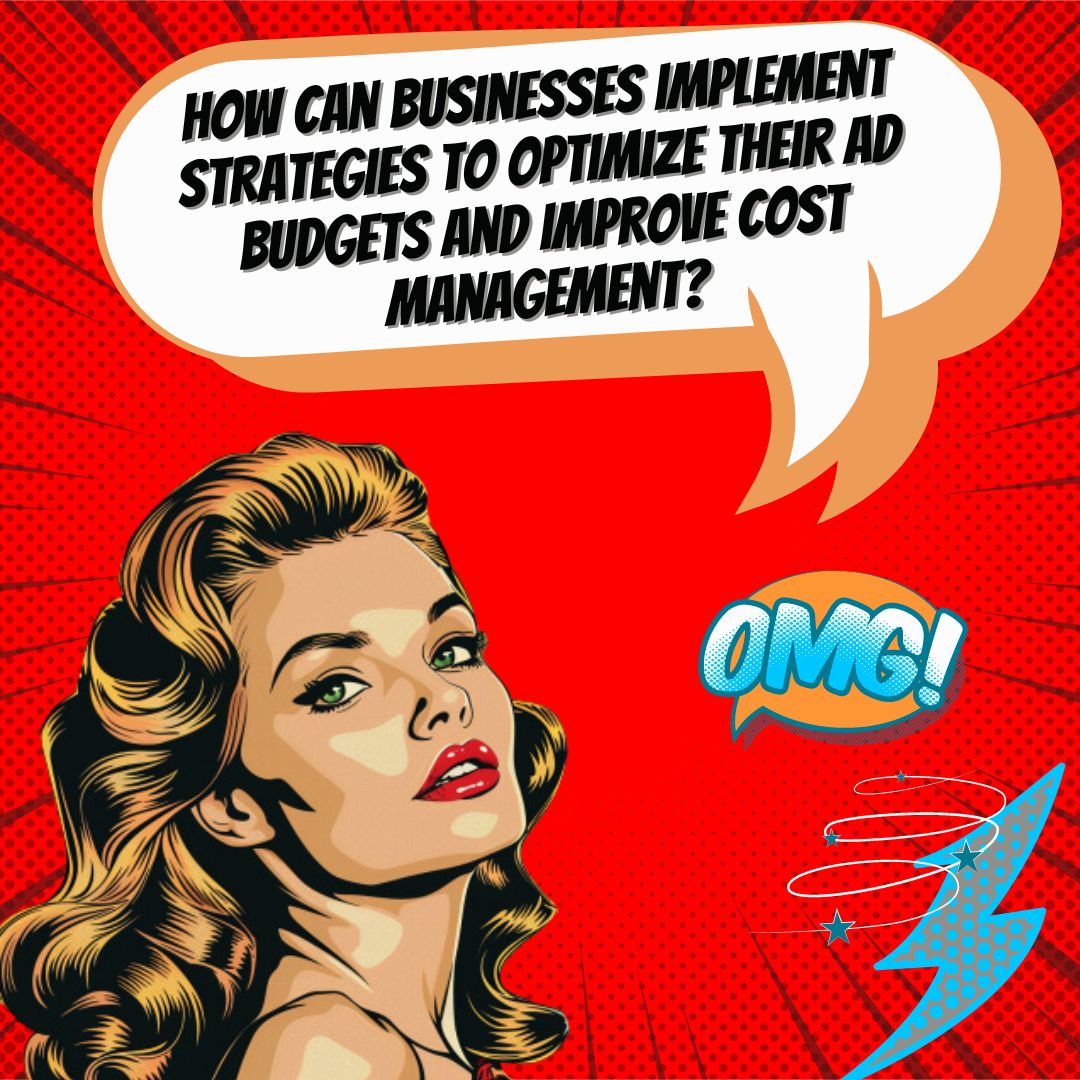Key Takeaways
✅ Allocate Your Budget Strategically: It's not just about how much you spend, but where you spend it. Advertising on channels with a proven track record can yield a return on investment (ROI) as high as 200% or more. However, indiscriminate spending can lead to dismal results. Allocating funds towards channels and audiences with the highest potential ROI, by keeping customer lifetime value and conversion rates in mind, can turn your ad spend into a profitable investment.
✅ Monitor and Optimize Continuously: Did you know that companies that optimize their campaigns regularly can see a 50% increase in their ROI? By keeping a close watch on key performance indicators (KPIs) and tweaking your campaigns accordingly—whether it's bid amounts, targeting specifics, or message tone—you can sharpen your competitive edge and make every dollar count.
✅ Set Clear Objectives and KPIs: Clarity is power when it comes to advertising. Setting objectives like a 25% increase in web traffic or a 15% uptick in lead generation can serve as a north star for your campaigns. With measurable KPIs in place, you'll know exactly where to channel your ad budget, and more importantly, you’ll be able to measure success in tangible terms.

Introduction
Are you tired of seeing your ad budget vanish into thin air without any noticeable return? You're not alone. In today's fast-paced digital marketplace, getting a handle on Effective Strategies for Ad Budgeting and Cost Management can feel like taming a wild beast. So, how can you ensure that your ad dollars are not just spent, but invested wisely?
Businesses everywhere face the daunting task of making their ad budgets work harder and smarter. With global digital ad spend reaching over $378 billion in 2020, it’s clear that advertising is a massive investment for companies. But with so many channels and strategies to choose from, how do you ensure you're not throwing your money into a black hole?
This guide cuts through the complexity and gets down to the brass tacks of mastering Ad Budgeting and Cost Management. From detailed plans that take into account seasonal shifts and audience tendencies, to execution strategies that maximize every cent, we dive deep into methods that deliver results.
Stay with us as we unveil a wealth of actionable insights and groundbreaking information that will help you not just save money, but make your ad spend truly transformative for your business. Ready to take your ROI to new heights? Let's dive in.

Top Statistics
| Statistic | Insight |
|---|---|
| Global Digital Ad Spending: Projected to reach $455.3 billion in 2021. (eMarketer, 2021) | The surge in digital ad spend is a clear indicator that businesses are valuing the online space more than ever for attracting customers. |
| Programmatic Ad Spending: Expected to hit $112.8 billion, making up 89% of US digital display ad spending in 2021. (eMarketer, 2021) | This statistic showcases the efficiency and effectiveness of programmatic ad buying in today's ad strategies. |
| Mobile Ad Spending: Accounts for over half of total digital ad spending with $250.7 billion projected in 2021. (eMarketer, 2021) | With mobile usage on the rise, this emphasizes the need for marketers to allocate a significant portion of their ad budget to mobile platforms. |
| Social Media Ad Spending: Expected to increase to $47.6 billion in 2021, an 18.3% growth YoY. (eMarketer, 2021) | The importance of a strong social media presence is undeniable, as it becomes a crucial avenue for brands to engage with potential customers. |
| Global Ad Market Growth: Projected to grow by 10.4% in 2021, reaching $669.9 billion. (GroupM, 2021) | Such a growth prediction suggests a recovering and robust ad industry, where businesses can look to reinvest with confidence post-economic downturns. |
The Importance of Ad Budgeting and Cost Management
Ad budgeting and cost management are vital for steering your marketing efforts towards success. Without a keen focus on how much you're spending and where you might as well be throwing money into a bottomless pit. Many businesses grapple with the dilemma of allocating sufficient funds to get their message out, while not overspending and wasting precious resources. These challenges are intensified by a constantly evolving digital landscape, where the effectiveness of ad spend can fluctuate dramatically.

Setting Realistic Goals and Objectives
To keep your advertising efforts on track, pinpointing key performance indicators (KPIs) is essential. These metrics will be your north star, guiding you towards what success looks like for your campaigns. Equally crucial is understanding your target audience, without which even the most extravagant ad campaigns can miss the mark. Knowing who you’re speaking to is the first step in crafting a message that resonates and drives results.
Conducting Market Research and Competitor Analysis
Grasping the full picture of the advertising landscape requires thorough market research. Your business doesn't exist in a vacuum, and your ads will be competing for attention with countless others. Analyzing your competitors’ ad strategies can provide invaluable insights. What are they doing well? Where are they missing the mark? Learn from their successes and mistakes to make your ad spend go further.
Developing a Detailed Ad Budget Instruction
A detailed ad budget is more than numbers on a spreadsheet—it's a strategic document that aligns with your marketing goals. When dividing your budget across different channels and platforms, remember to factor in variables like seasonality and market trends. Ignoring these factors can mean missing out on prime opportunities or overspending during a market dip.

Implementing Cost-Effective Advertising Strategies
There's a myriad of options for cost-effective advertising—from the power of a well-crafted tweet to an influencer's subtle product plug. However, the key to unlocking the potential of these strategies lies in experimentation and A/B testing. Iterative testing and optimization can reveal the most effective strategies for your business, ensuring you get the most bang for your buck.
Monitoring and Evaluating Ad Performance
Once your ads are up and running, constant vigilance is key. Monitoring ad performance using analytics tools helps businesses make informed decisions. This isn't set-it-and-forget-it; it's about responding to what the numbers are telling you. By adjusting your ad budgets based on real-time data, you continually refine your approach to get the best results.
Continuous Learning and Adaptation
The marketing world doesn't stand still, and neither should your ad budgeting practices. Embracing continuous learning and adaptation is vital. You'll need to be prepared to pivot and change course as new information and technologies emerge. By staying informed and flexible, you can ensure that your ad budgeting strategies remain effective in the face of change.
Armed with these insights and strategies, you're well on your way to mastering the art of ad budgeting and cost management. Whether you're a seasoned marketer or a newcomer to the field, the focus should always be on learning, adapting, and optimizing to achieve the best possible results for your business.

AI Marketing Engineers Recommendation
Recommendation 1: Leverage Predictive Analytics to Forecast Ad Spend ROI: Harness the power of predictive analytics tools to determine the potential return on investment (ROI) for various advertising strategies before fully committing your budget. By analyzing historical data and current market trends, you can make informed decisions about where to allocate funds. For instance, a survey by Forrester found that businesses that invest in predictive analytics report 73% higher revenue than those that do not. Consequently, precise targeting and budgeting are not just guesses; they're now data-informed decisions which can maximize your ad spend efficacy.
Recommendation 2: Embrace Programmatic Advertising to Optimize Ad Budgets: Incorporate programmatic advertising into your strategy to automate the buying and placement of ads in real-time, utilizing AI to target the most relevant audiences. This dynamic approach not only streamlines operations but also improves cost-efficiency by reducing manual errors and labor costs. According to eMarketer, programmatic ad spending is expected to account for 88% of all US digital display ad spending by 2021. This trend underscores the importance of leveraging technology for better ad budgeting and cost management.
Recommendation 3: Utilize Cost-Effective Social Media Advertising Platforms: Identify which social media platforms give you the most value for your ad budget. Platforms like Facebook and Instagram offer sophisticated targeting options that allow you to reach specific demographics at a relatively low cost. Moreover, many platforms provide built-in analytics for you to track the performance of your ads in real time. With reports indicating that social media budgets accounted for 24% of total US marketing budgets during Q2 of 2020 (according to a CMO Survey), the relevance and benefits of investing in these platforms are clear. Employing them effectively can help you maximize your ad expenditure by engaging with your audience where they are most active.
Relevant Links
- Conquer WeChat: The Gateway to Chinese Digital Marketing Mastery
- Unlocking the Power of Short Video: Dominate China's Market with Douyin and Kuaishou
- Catch the K-Wave: Winning Strategies for Sizzling Video Marketing in Korea
- E-Commerce SEO Mastery: Capturing the Korean Digital Marketplace
Conclusion
In the grand tapestry of today's marketing landscape, Ad Budgeting and Cost Management stand as critical threads connecting business goals with achievable outcomes. As we've explored, setting concrete objectives, tuned with the beat of market rhythms, lays a strong foundation for any advertising endeavor. But it doesn't stop there. The alchemy of turning ad dollars into tangible success is an art as much as a science.
Understanding your audience is the cornerstone of effective strategies—know them, and you're already a step ahead in allocating your budget wisely. Add to this a thorough competitor analysis, and you begin shaping a campaign poised for positive return on investment (ROI). This competitive insight arms you with the knowledge to carve out your niche and use your funds more judiciously.
Building a robust ad budget plan is akin to charting a course through uncharted waters; the variables of seasonality and shifting consumer behaviors are your winds and tides. In these waters, riding the waves of cost-effective advertising strategies such as targeted social media campaigns and insightful content marketing can navigate you towards your sought-after destination.
Yet the journey doesn't end with implementation. Continually monitoring and evaluating ad performance with the compass of key metrics ensures you're sailing in the right direction, enabling you to tack and jibe as necessary. This agility is indispensable in steering clear of the icebergs of wasted resources and suboptimal results.
We must embrace a spirit of continuous learning and adaptation. The marketing world is ever-evolving, with new channels emerging and consumer tastes changing. Keeping abreast of these changes and being ready to adjust your sails accordingly is paramount. This is not just a conclusion, but an invitation—a call to action to apply these evergreen principles of mastering ad budgeting and cost management, and to stay hungry for that horizon of maximum efficiency and impact in your advertising strategies.

FAQs
Question 1: What are the foundational concepts of ad budgeting and cost management?
Answer: At the heart of it, it's about knowing what you want to achieve and who you're talking to. Understanding how the ad platforms work their magic with bids and algorithms is key. You want your ad dollars to work hard, targeting your objectives and the kind of returns you're looking for. And hey, keep a close eye on how your ads are doing and jiggle things around if needed.
Question 2: How do I determine the appropriate ad budget for my business?
Answer: Start playing it safe with your budget, then dial it up as you get a feel for the landscape. Think about your industry, the competitors you're up against, your core audience, and your endgame. Got some historical data or industry benchmarks? They'll be your compass for setting expectations.
Question 3: What are some advanced strategies for optimizing ad spend?
Answer: Testing is your friend—A/B testing to be exact. Find out what ads and targeting tick the boxes. Put smart automated bidding strategies to work and use machine learning to get more bang for your buck. Oh, and circle back to those who've visited your site before. They're gold.
Question 4: How can I maximize the return on my ad investment?
Answer: You need ads that hit the sweet spot with your audience—quality and relevance are game-changers. Hone in on targeting and tinker with your bids based on how your ads perform. Watch those click and conversion rates like a hawk.
Question 5: What are the best practices for ad budgeting and cost management?
Answer: Tracking is vital to see how your investment's panning out. Don't set it and forget it—keep an eye on how your ads do and adjust as you go. And always, always stash a bit of your budget to test new ideas and avenues.
Question 6: How do I balance ad spend across multiple platforms and channels?
Answer: Don't put all your eggs in one basket—see which platforms and channels align with your goals. Spread out your spend based on how well each is performing. And remember, every platform has its quirks and tricks, so tailor your approach.
Question 7: What are the most common mistakes in ad budgeting and cost management?
Answer: It's a slippery slope if you get too cozy with just one ad channel, neglect to check on ad performance, set pie-in-the-sky goals, or skimp on the budget for trying out new strategies.
Question 8: How can I stay up-to-date with the latest ad budgeting and cost management strategies?
Answer: Keep your ear to the ground with industry news, jump into webinars, conferences, and workshops. Plug into the community—forums and online groups are a wellspring of shared knowledge.
Question 9: What are some relevant hashtags for ad budgeting and cost management?
Answer: Light up social media with hashtags like #adbudgeting, #costmanagement, #adspend, #ROI, #adstrategy, and #digitalmarketing.
Question 10: Can you recommend some academic references or resources for further learning?
Answer: Dive into books like "Digital Marketing: Strategy, Implementation and Practice" and "Digital Marketing Analytics: Making Sense of Consumer Data." HubSpot Academy's got a slew of free courses too.

Academic References
- Little, J. D. C., & Waksman, S. C. (1999). Allocating Advertising Resources: A Model-Based Approach. Journal of Marketing Research, 36(3), 345-359. In this article, Little and Waksman unveil a framework designed to optimize the distribution of an advertising budget across various media outlets. They take into account several crucial factors, including media costs, reach, and frequency, emphasizing a strategic and data-driven approach to advertising investment.
- Dubé, J-P., Mela, C. F., & Shum, M. S. (2005). The Long-Run Effects of Advertising: A Study of Durable Goods. Marketing Science, 24(1), 4-18. The study conducted by Dubé, Mela, and Shum sheds light on the enduring effects of advertising on brand equity and sales. Their research underscores the significant time-sensitive influences of ad campaigns, which are essential for those planning and adjusting long-term advertising budgets.
- Dant, R. P., & Jain, A. K. (2003). A Review of Advertising Budgeting Research: The State of the Art and Future Avenues. Journal of Advertising, 32(4), 41-61. Dant and Jain offer a meticulous evaluation of advertising budget research, pinpointing the crucial integration of marketing and finance. Their work advises on contemplating advertising's role within the broader marketing strategy and the necessity of an adaptive budgeting process under a fluctuating market environment.
- Little, J. D. C. (1979). Marketing Budgeting: An Analytical Approach. Marketing Science, 6(2), 109-119. In his foundational article, John D. C. Little proposes a methodical strategy for marketing budgeting. He champions mathematical models as vital tools to maximize the effectiveness of the allocation of marketing resources, including advertising expenditures. His analytic method remains a cornerstone for strategic financial planning in marketing.
- Abel, A. B., & Satterthwaite, M. A. (1999). Advertising Budget Allocation: A Review of the Empirical Evidence. Journal of Business, 72(4), 549-576. Abel and Satterthwaite critically assess the empirical data on how advertising budgets are allocated. Their scrutiny reveals the profound influence of ads on sales dynamics, market share, and brand building, all while considering the overarching impact of externalities like market competition and economic conditions.







